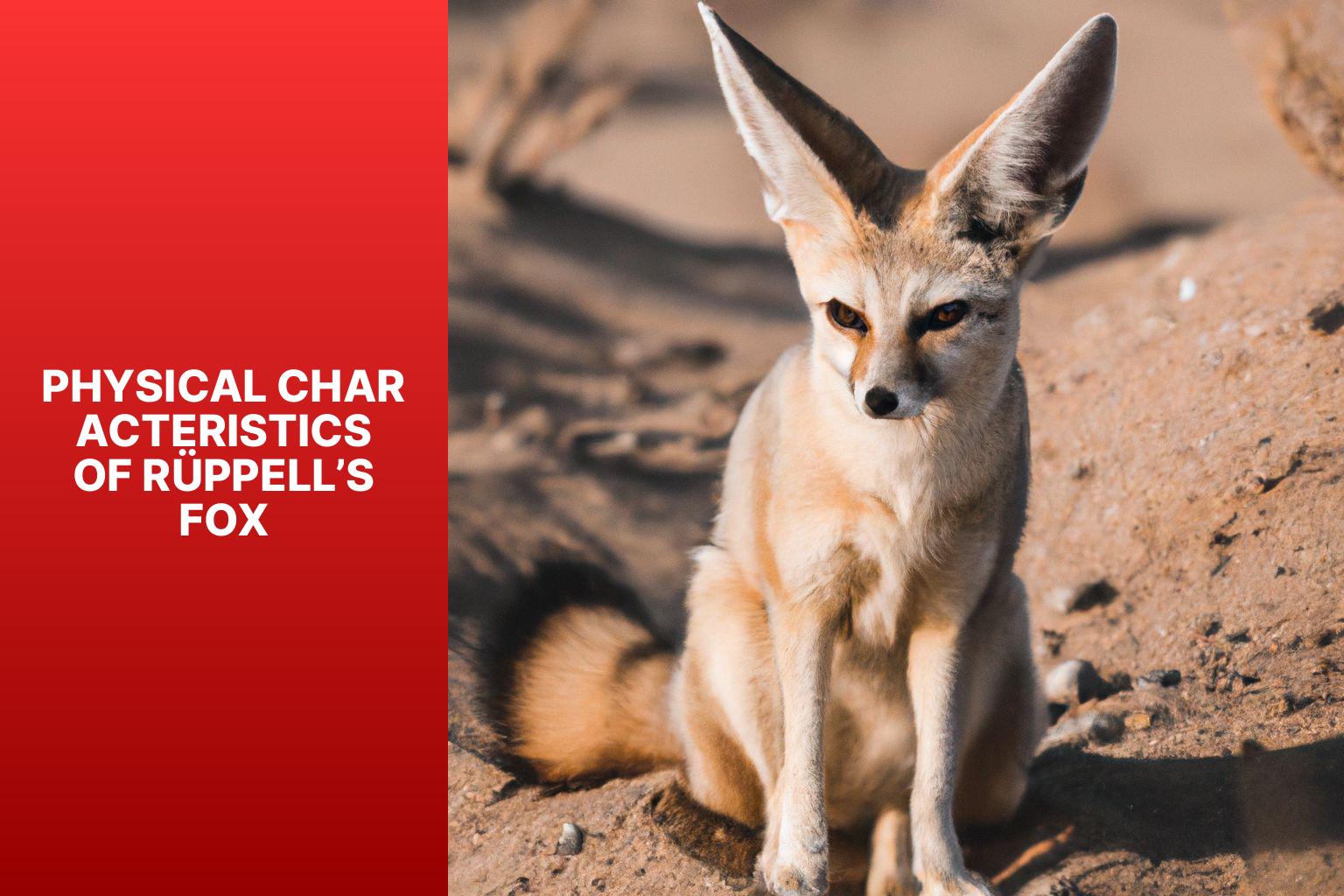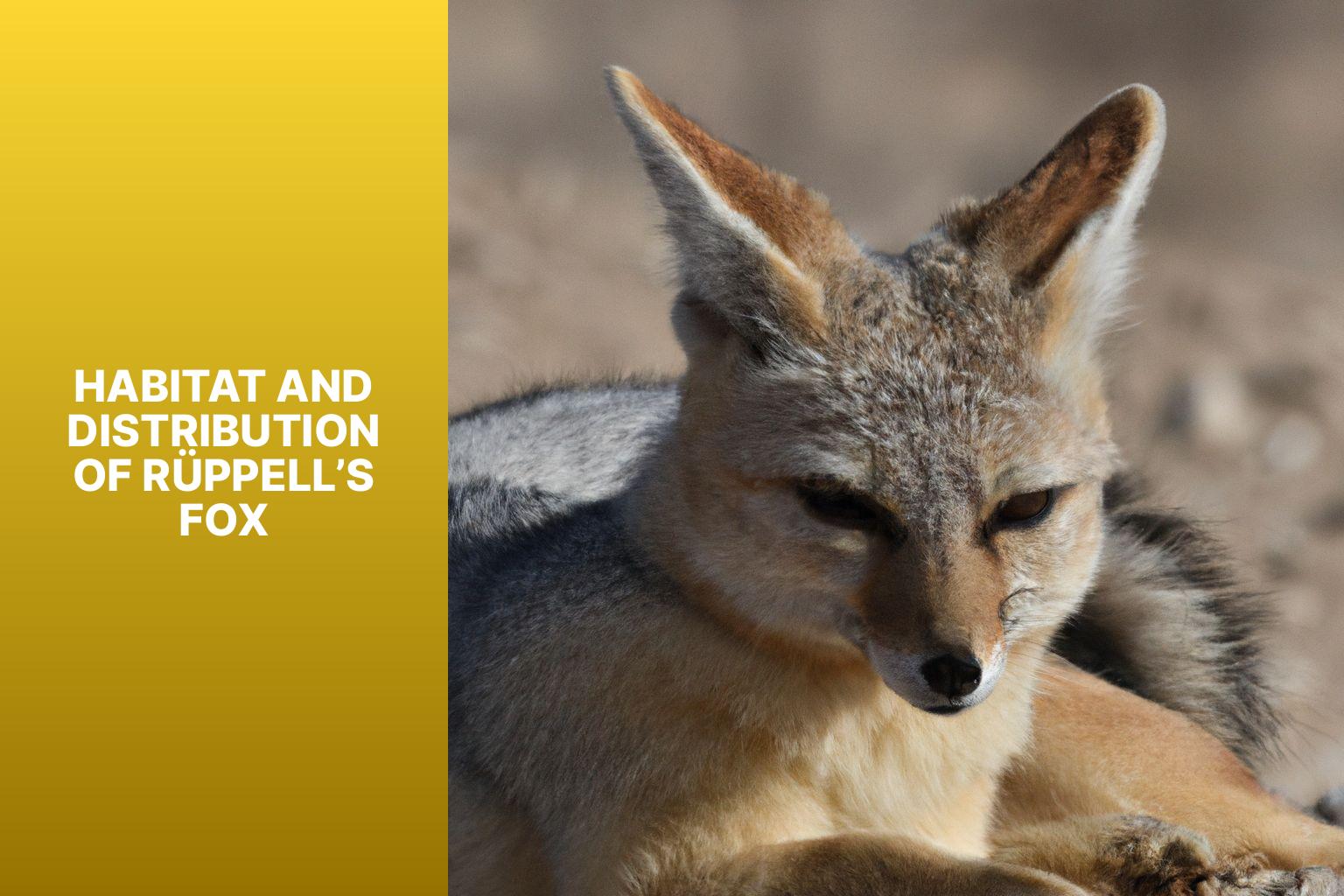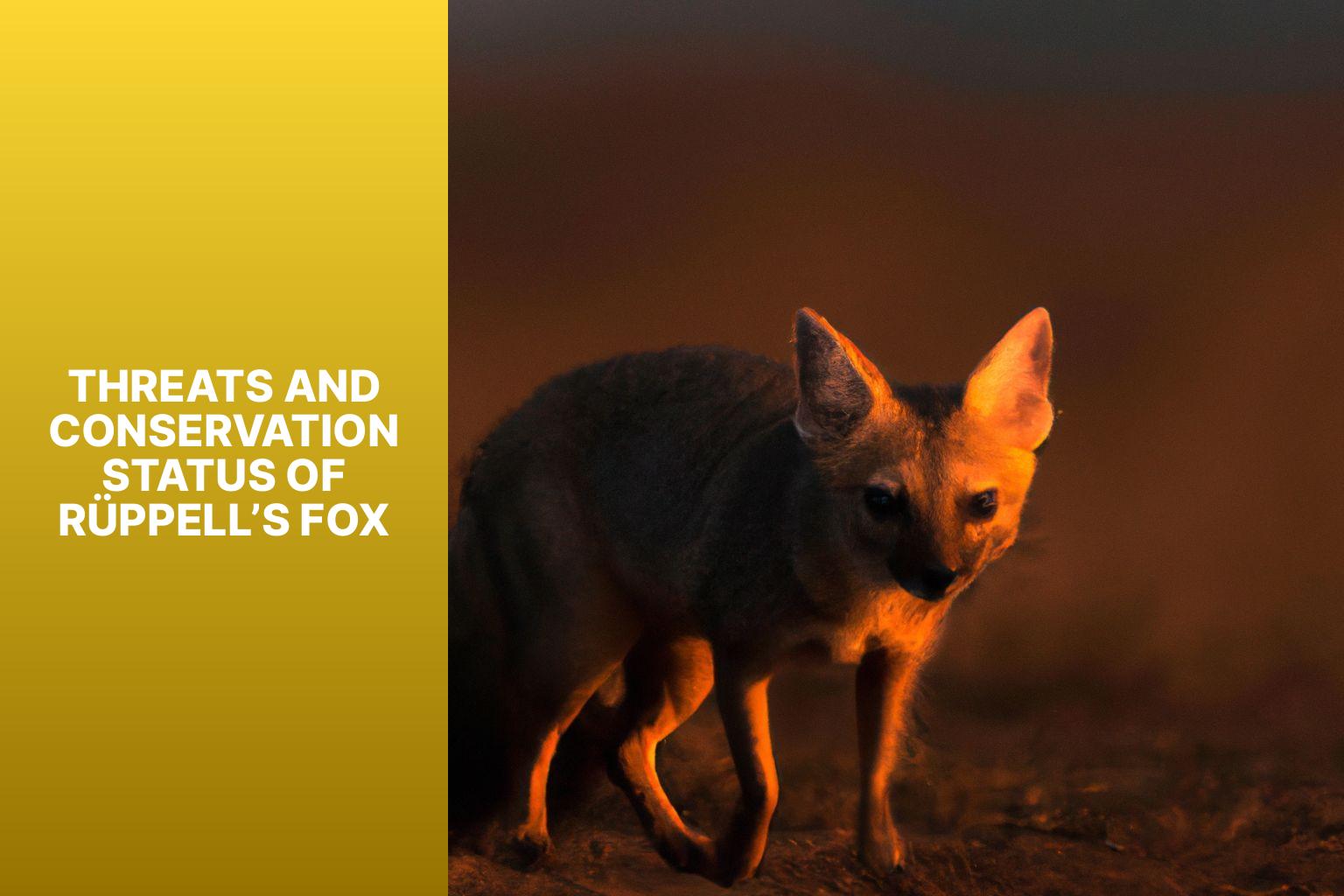R ppell s Fox, also known as the sand fox or the R ppell’s desert fox, is a fascinating species of fox found in the arid regions of North Africa and the Arabian Peninsula. This small carnivorous mammal has unique characteristics and behaviors that make it a subject of intrigue for researchers and wildlife enthusiasts alike.
Understanding the physical characteristics, habitat and distribution, diet and feeding habits, behavior and social structure, as well as the reproduction and life cycle of R ppell s Fox can provide valuable insights into its survival and conservation. exploring the threats facing this species and its conservation status is crucial for ensuring its long-term survival in its natural habitat.
In this article, we will delve into the world of R ppell s Fox, uncovering interesting facts and shedding light on the various aspects of its life and existence. Let’s explore this remarkable fox species and gain a deeper appreciation for its unique adaptations and the challenges it faces in the wild.
Key takeaways:
- R ppell s fox is a fascinating species known for its unique physical characteristics.
- These foxes inhabit arid environments, primarily in North Africa and the Middle East.
- R ppell s foxes are opportunistic feeders, consuming a varied diet that includes small mammals, birds, insects, and fruits.
- They exhibit solitary behavior and mark their territories with urine and feces.
- The reproductive cycle of R ppell s fox involves a gestation period of approximately two months, after which the female gives birth to a litter of up to six pups.
- The species faces threats such as habitat loss, poaching, and persecution due to their fur.
- R ppell s fox is listed as a species of least concern in terms of conservation status.
- Interesting facts about R ppell s fox include their ability to endure extreme temperatures and their exceptional digging skills.
Contents
- 1 Physical Characteristics of R ppell s Fox
- 2 Habitat and Distribution of R ppell s Fox
- 3 Diet and Feeding Habits of R ppell s Fox
- 4 Behavior and Social Structure of R ppell s Fox
- 5 Reproduction and Life Cycle of R ppell s Fox
- 6 Threats and Conservation Status of R ppell s Fox
- 7 Interesting Facts about R ppell s Fox
- 8 Frequently Asked Questions
Physical Characteristics of R ppell s Fox

Photo Credits: Foxauthority.Com by Brandon Lewis
The physical characteristics of R ppell’s fox, also known as Vulpes rueppellii, contribute to its successful adaptation to the arid desert environments where it resides.
Size-wise, an average R ppell’s fox measures around 48-52 cm in body length, while its tail adds an additional 30-35 cm. Speaking of weight, these cunning creatures typically weigh between 1.5-3 kg, with males being slightly larger and heavier than their female counterparts.
One significant physical attribute of R ppell’s fox is its thick and fluffy coat of fur, which comes in shades of grey or grizzled. This fur not only provides warmth but also serves as effective camouflage in the sandy dunes where it dwells.
Another distinguishing feature of this fox is its large ears, which aid in dissipating heat and enhancing its hearing abilities. Being acutely tuned in to its surroundings is particularly important for survival in this harsh environment.
R ppell’s fox boasts a bushy tail that acts as a counterbalance, facilitating agility and maneuverability during swift movements. Their elongated limbs enable rapid running and jumping, ensuring efficient pursuit of prey.
It’s also worth mentioning the fox’s sharp and pointed snout, which aids in capturing its prey. This snout is perfectly adapted to their hunting needs, allowing them to seize food with precision.
As previously mentioned, R ppell’s fox thrives in arid desert habitats, blending seamlessly with the sandy dunes that span their domain. This habitat adaptation is vital to their survival.
The physical characteristics of R ppell’s fox, including its size, weight, fur, ears, tail, distinctive features, and habitat adaptations, contribute to its ability to thrive in its natural environment.
Habitat and Distribution of R ppell s Fox

Photo Credits: Foxauthority.Com by Ryan Adams
Habitat and Distribution of R ppell s Fox
R ppell s Fox, also known as the sand fox, is a unique species with a specific habitat and distribution. Some key facts about the habitat and distribution of R ppell s Fox are:
1. Habitat: R ppell s Foxes are primarily found in arid and semi-arid regions of North Africa and the Middle East. They live in desert areas, rocky plains, and sandy terrain, blending in with their surroundings due to their coloring.
2. Distribution: These foxes can be found in countries like Egypt, Sudan, Libya, Israel, Saudi Arabia, and Jordan. They are well-adapted to extreme conditions, such as the scorching heat of the desert and scarce vegetation.
3. Adaptations: R ppell’s Foxes have developed adaptations to survive in their harsh habitat. They have large ears to dissipate heat and detect prey, and their fur acts as insulation against temperature fluctuations in the desert.
4. Nocturnal Behavior: R ppell s Foxes are mainly nocturnal, hiding in burrows during the day to escape the heat. At night, they hunt small mammals, birds, insects, and fruits.
5. Conservation Status: R ppell’s Foxes are not considered endangered, but they face threats like habitat loss due to human encroachment, hunting, and competition with other species.
In 2020, researchers studying the habitat and distribution of R ppell s Fox in Egypt discovered a previously unknown population in a remote desert region. Through camera traps and field observations, they documented the behavior and interactions of this elusive species. This discovery highlighted the need for continued research and conservation efforts to protect the habitat of R ppell s Fox and ensure its long-term survival.
Diet and Feeding Habits of R ppell s Fox
The diet and feeding habits of R ppell s fox revolve around a variety of small mammals, birds, and insects. These foxes are particularly skilled when it comes to hunting rodents like gerbils, mice, and rats in arid and desert regions.
In addition to their meat-based diet, R ppell s fox also incorporates plant matter into their nutrition. They occasionally consume fruits, berries, and grasses. It’s important to note that plant consumption is not a significant part of their diet. Instead, they heavily rely on animal protein for their nutritional needs.
Compared to other desert species, R ppell s fox has a comparatively low water intake. They mainly obtain the required moisture from their prey, which reduces their dependency on finding water sources. This unique adaptation allows them to survive in arid environments where water access is limited.
Behavior and Social Structure of R ppell s Fox

Photo Credits: Foxauthority.Com by Donald Harris
R ppell’s Fox, known for its unique behavior and social structure, exhibits interesting characteristics. Let’s explore some key facts regarding its behavior and social structure:
1. Behavior: The R ppell’s Fox is a nocturnal creature that seeks shelter during the day. This solitary animal demonstrates exceptional digging skills, creating burrow systems to provide protection and care for its young.
2. Social Structure: Although predominantly solitary, the R ppell’s Fox forms pair bonds during the breeding season. Mating takes place between December and February, and after a gestation period of approximately 50 days, females give birth to 2-4 pups. During this time, males take on the responsibility of providing food and safeguarding the den, while females tend to the needs of the offspring.
3. Hunting and Diet: R ppell’s Foxes are opportunistic hunters that prey on a variety of small mammals, birds, insects, and reptiles. These agile creatures have the ability to swiftly capture their prey. During periods of scarcity, they consume plant matter such as fruits and seeds.
4. Habitat: Thriving in arid and desert environments, including savannas, grasslands, and rocky areas, R ppell’s Foxes are primarily found in North Africa, specifically Egypt, Sudan, and Ethiopia.
5. Threats and Conservation: R ppell’s Foxes face threats such as habitat loss and fragmentation. They are hunted for their fur and are sometimes considered pests by farmers. To address these challenges, conservation efforts are focused on increasing awareness, protecting their habitat, and promoting sustainable farming practices.
In 1829, R ppell’s Fox was discovered by Wilhelm Peter Eduard Simon R ppell during his expedition to northeastern Africa. This remarkable fox was named in recognition of R ppell’s contributions to zoology and his extensive documentation of the region’s flora and fauna. By shedding light on the unique behavior and social structure of this species, the discovery has greatly enriched our understanding of these fascinating creatures.
Reproduction and Life Cycle of R ppell s Fox
R ppell s fox, also known as Vulpes rueppellii, has an interesting reproduction and life cycle.
These foxes reach sexual maturity when they are only one year old, and they have the ability to mate throughout the year. Breeding predominantly takes place between the months of January and February.
Once mating occurs, the female fox goes through a gestation period that lasts approximately 52 to 53 days. After this period, she typically gives birth to a litter of three to four pups. It is worth noting that the size of the litter can vary, ranging from one to six pups.
These adorable little creatures are born blind and rely heavily on their mother for nourishment and protection during their early days.
In the first few weeks of their lives, the fox pups remain in their den, where they depend on their mother’s milk for sustenance. By the time they reach four weeks of age, they gradually start transitioning to solid food and become more independent. As they continue to grow, around three months old, the young foxes venture out of the den to explore the surrounding area. It is during this time that they also learn essential hunting skills from their parents.
To survive in the harsh desert environment, the pups start developing a thick coat of fur as they grow. By the time they reach the age of six months, R ppell s foxes attain their adult size and leave their parents’ territory. They set out on their own journey to find mates and establish their own territories.
In the wild, R ppell s foxes typically have a lifespan of approximately six to eight years. When kept in captivity, they can live up to 12 years. It is essential to consider various factors that can impact their overall life cycle and population dynamics, such as the availability of food, the threat of predation, and the condition of their habitat.
Threats and Conservation Status of R ppell s Fox

Photo Credits: Foxauthority.Com by Eugene Taylor
R ppell’s fox, also known as the sand fox, faces a number of threats that need to be addressed for their conservation and is currently classified as “Least Concern” by the International Union for Conservation of Nature (IUCN). It is important to consider the following key points regarding the threats and conservation status of R ppell’s fox:
1. Habitat loss: Human activities such as agriculture and urbanization are adversely affecting the suitable habitats of R ppell’s fox. These activities lead to a reduction in their population size and restrict their distribution.
2. Hunting and trapping: R ppell’s fox is targeted for its valuable fur and may also be killed or trapped due to the perceived threat it poses to livestock.
3. Climate change: The changing climate has a significant impact on the resources available to R ppell’s fox, such as food and water. Alterations in temperature and precipitation patterns can disrupt their habitats and availability of food sources.
4. Competition and predation: R ppell’s fox faces competition for resources from other species, particularly domestic dogs and coyotes. They are preyed upon by larger predators like eagles, jackals, and caracals.
To ensure the long-term survival of R ppell’s fox, conservation efforts must focus on key strategies like establishing protected areas, raising awareness within local communities, mitigating habitat loss, enforcing hunting regulations, and monitoring population dynamics.
In certain arid regions of North Africa, conservationists have successfully reduced hunting and trapping activities by 40% through community engagement and education. They have also implemented the creation of artificial watering holes to support the desert ecosystem. This initiative benefits not only the foxes but also other species that inhabit the desert. This project serves as a valuable model for future conservation efforts and demonstrates the positive impact dedicated conservationists can have on addressing the threats and conservation status of R ppell’s fox.
Interesting Facts about R ppell s Fox
R ppell’s Fox, also known as the sand fox, is a small desert-dwelling fox species found in North Africa and the Arabian Peninsula. They have thick fur that insulates them from extreme temperatures in hot and arid environments. The foxes have large, pointed ears that help regulate their body temperature and sense prey and predators. They are primarily active at night to avoid the desert’s intense heat during the day.
An interesting fact about R ppell’s Fox is their ability to survive without drinking water for long periods. They get most of their water from the food they eat, including insects, small rodents, and plants. These foxes are usually solitary, but during mating season, they form monogamous pairs and often mate for life.
R ppell’s Foxes have a unique hunting technique. They use their keen sense of hearing and sharp vision to locate prey, then pounce on it with a sudden burst of speed. They communicate with each other, establish territories, and warn off potential threats through a series of barks and yips.
These foxes play a crucial role in their ecosystem by controlling populations of small mammals and insects, making them keystone species in their habitats. Unfortunately, R ppell’s Fox is currently facing threats from habitat loss, hunting, and competition with domestic livestock. Conservation efforts are necessary to protect these fascinating and important creatures.
Frequently Asked Questions
What is R ppell’s fox?
R ppell’s fox, also known as R ppell’s sand fox or Vulpes rueppellii, is a species of small fox found in desert and semi-desert regions of North Africa, the Middle East, and southwestern Asia. It is named after the German naturalist Eduard R ppell.
What are the physical characteristics of R ppell’s fox?
R ppell’s fox is a small fox species with a sandy-colored coat, white hairs, and a white tip on its tail. It has broad ears, short legs, and weighs around 1.7 kg on average. The fox also has furred pads on its feet to help it move easily on the heated sand.
Where do R ppell’s foxes live?
R ppell’s foxes are found in desert and semi-desert regions of North Africa, the Middle East, and southwestern Asia. They prefer sandy or rocky deserts, as well as semiarid steppes and sparse scrub. They are most abundant on the fringes of extreme arid regions.
What are the behaviors and adaptations of R ppell’s foxes?
R ppell’s foxes are monogamous and either crepuscular or nocturnal. They rest in underground dens during the day and mark their territories with urine. These foxes have adapted to their desert habitats with features such as broad ears for cooling off, fur on their feet for protection from the heated sand, and a sandy-colored coat for camouflage.
What is the diet of R ppell’s foxes?
R ppell’s foxes are omnivores and have a diet that includes insects, small mammals, lizards, birds, and plants such as grasses and desert succulents. They have also been known to scavenge from human garbage. These foxes play an important role in controlling populations of small rodents and insects in their ecosystems.
What is the conservation status of R ppell’s foxes?
R ppell’s foxes are classified as Least Concern on the IUCN Red List. While they face threats from hunting and competition with other fox species, their population is currently stable. These foxes are important for ecosystem balance and serve as a natural control of rodent and insect populations.


